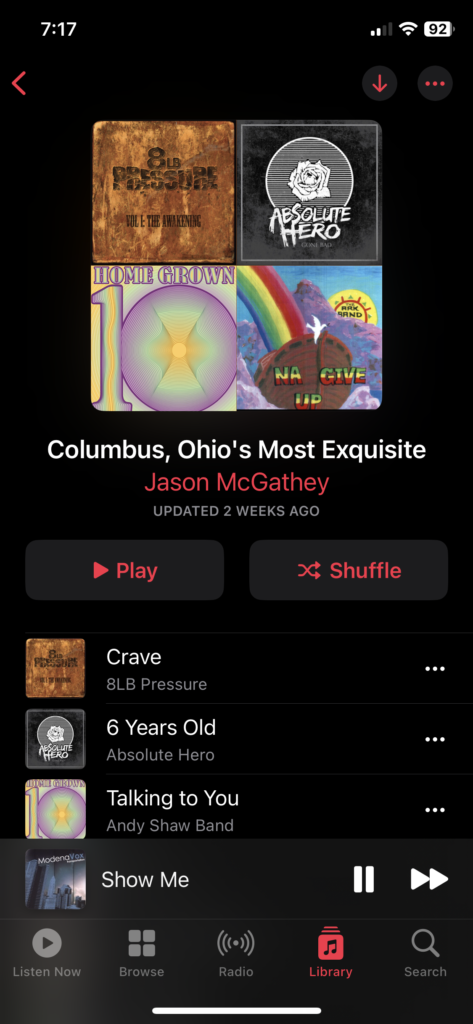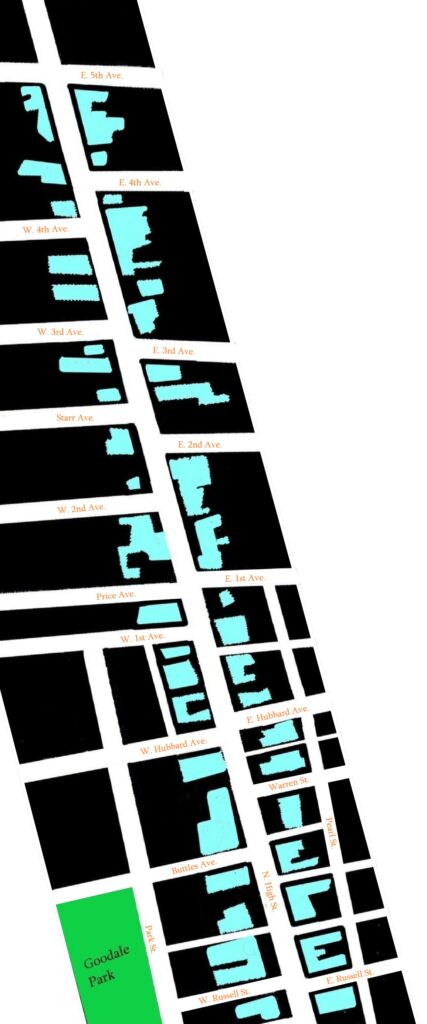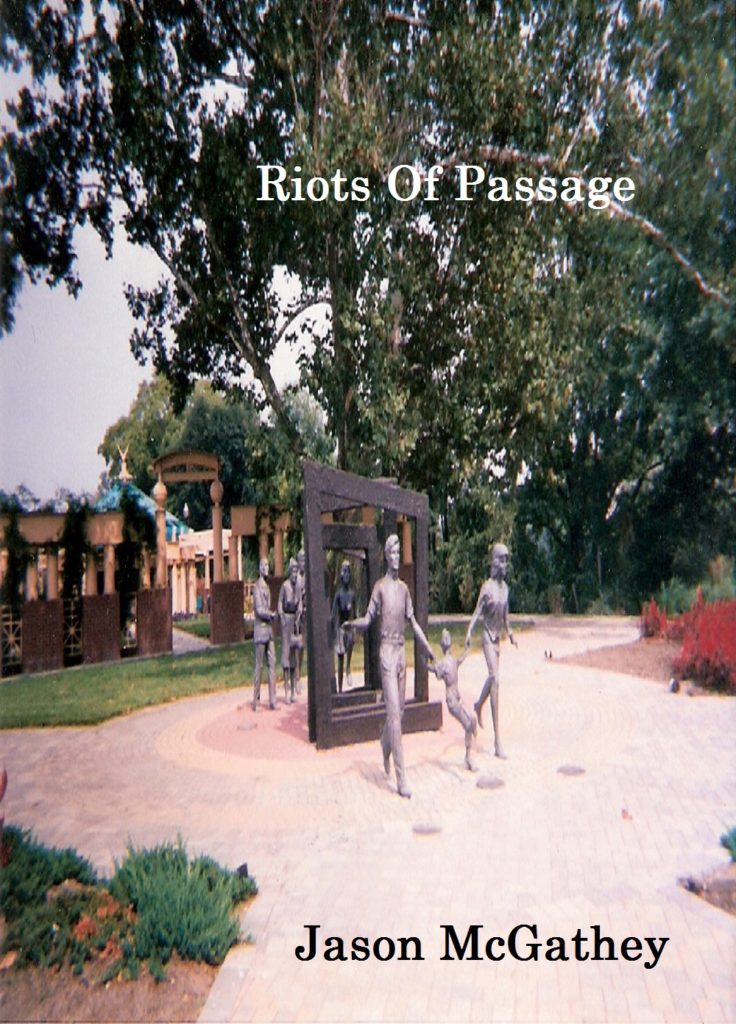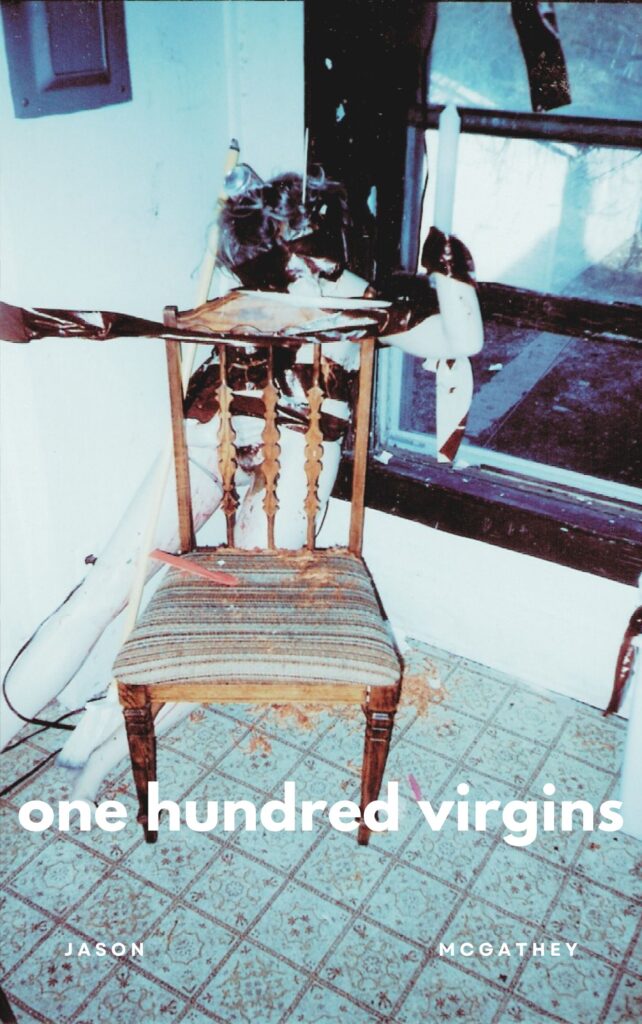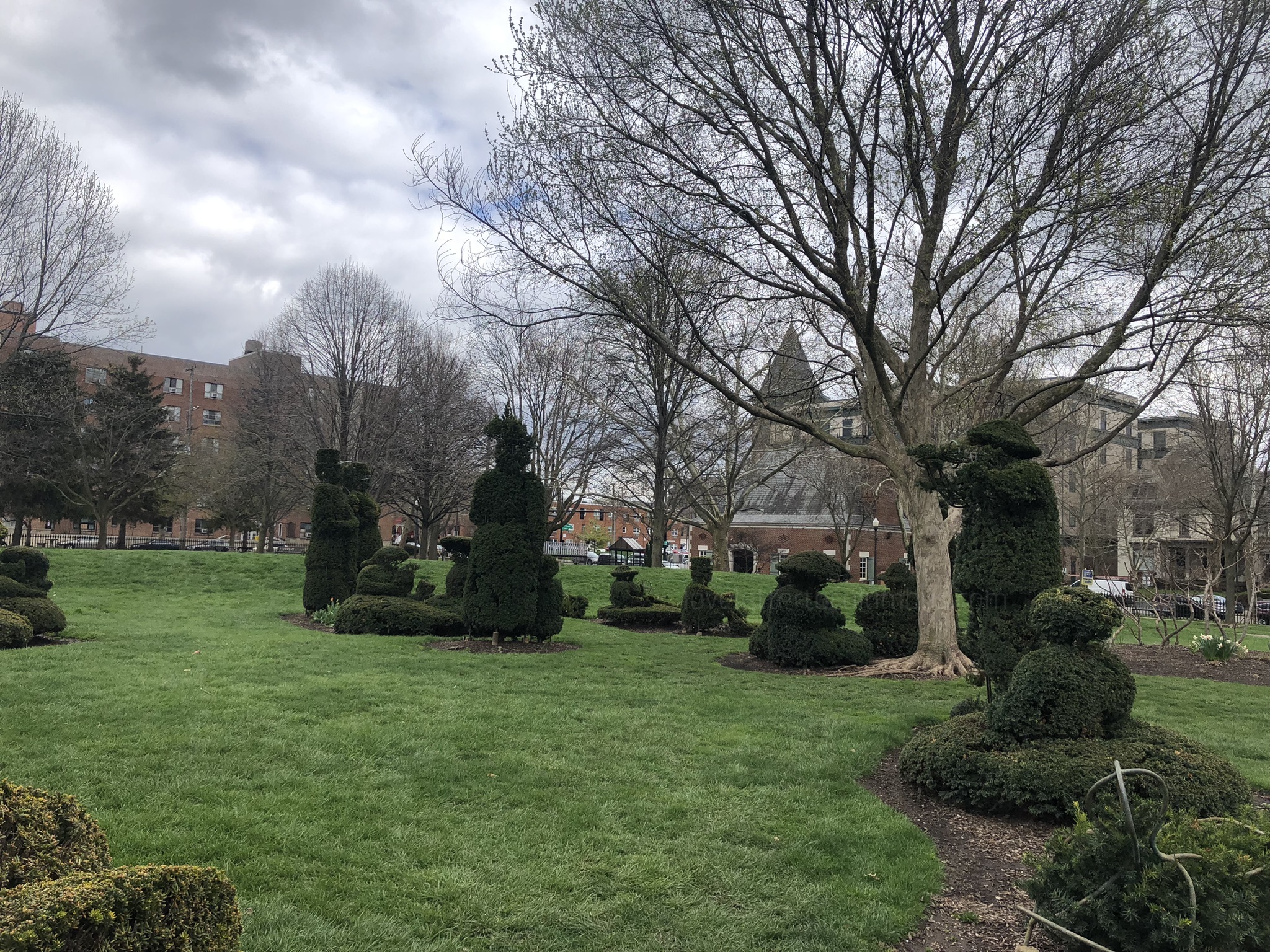
Topiary Park, located in downtown Columbus, made its debut during the whole AmeriFlora extravaganza in 1992. Even so, maybe it’s me, but I don’t recall hearing anything whatsoever about this phenomenal art installation until the early 2000s – at the earliest. The 1980s and 90s were very commercially oriented times, and unless you were a major business, or OSU (not that those two are mutually exclusive by any means) or maybe in more frivolous moments a big name musician who knew the right people, you were not getting any press whatsoever in this town during that whole era. Then again, maybe I have no room to talk, considering I’ve been working on this site for over a decade now, and am only now getting around to tackling Topiary Park myself.
But I mean, for a solid ten year stretch there I must have been in about the 99th percentile, city-wide, as far as who was reading the most actual print news publications here in C-bus, about C-bus, and despite all that…I had never heard of Topiary Park, much less been there. And going to the main branch of the library a ton, too! Which made it all the more bizarre to learn at some point, at least a decade down the road, that this park was located directly behind it, this entire time. My basic reaction could then be summarized as, “heh? What the hell!? I never knew about this!”
I feel like in the 21st century, there’s been more of a movement to slow down and say, okay, maybe we don’t need to pump up our commercial interests 100% of the time in these cities. It’s alright to appreciate the finer things, you might even wish to donate a few paragraphs in your (online) publications to something that doesn’t really make any money, every once in a while. After all, I think this is how I eventually first learned about Topiary Park.
So okay, for those who aren’t in the know, this is apparently the only park in the world which is 100% based upon a single painting. The artwork in question is Georges Seurat’s A Sunday Afternoon on the Isle of La Grande Jatte. During a recent visit there, I took some photos, and while I’m not sure any of these capture any angles that would make the connection apparent to you, they still look kind of cool anyway.

Among the first mysteries you will discover here, if approaching from the Library Park side, is that this place is apparently technically Topiary Garden, or even The Topiary Garden. Yet almost anything you will ever see refers to it instead as Topiary Park. This slight alteration over time is not unheard of – for example witness the name chiseled in stone at semi-nearby Brewmasters Gate, though listed almost everywhere else as “Brewmaster’s” – but I’m always curious at what point people effectively said, eh, screw that, I’m calling it something slightly different.
It’s possible this sign was never accurate, however, considering there is at least one notable blunder, a major omission near the bottom. Though crediting the entire project to James T. Mason, his wife Elaine was heavily involved too. They worked for the Parks and Recreation department, and when city leaders were scrambling their brains for ways to tie this then-neglected area in with the whole AmeriFlora bit (a 500th anniversary celebration of the imperialist our city was named after), Elaine was the one who came up with the idea.
“She was the first topiarist,” Carlene Palmquist, director of the nonprofit Friends of the Topiary Park, said in a 2017 interview with WOSU, “we like to say the brains behind the garden.”
So Elaine designed the thing, while her husband, the sculptor, set about carving out her designs from the shrubbery. This duo got to work in 1989, and it took some three years to reach completion. Prior to this, Ohio School for the Deaf was located on this site, before moving to its current location at 500 Morse Road. Then, in 1981, a fire destroyed most of the school, after which nearly all that remained was also demolished (basically just one building, that which is now known Cristo Rey High School, survived all this carnage). As part of Jim and Elaine Mason’s master plan, getting to work on this vision for transforming it, they didn’t just install the sculpted plants, either, but also a pond, some hills, and an iron fence around the park. A little later, in 1998, the gatehouse building was added, which includes a gift shop and information desk.
I didn’t follow the instructions on the sign, as far as comparing the scenery vs. the painting, mostly because it was cold and I was kind of in a hurry. But below are some of the better shots I captured on this afternoon. In addition to all the people and a few dogs, there is also exactly one cat and one monkey included among these figures. However, you can’t really spot them in any of the pictures I took – although this just gives you an excellent excuse to explore these grounds on your own.




